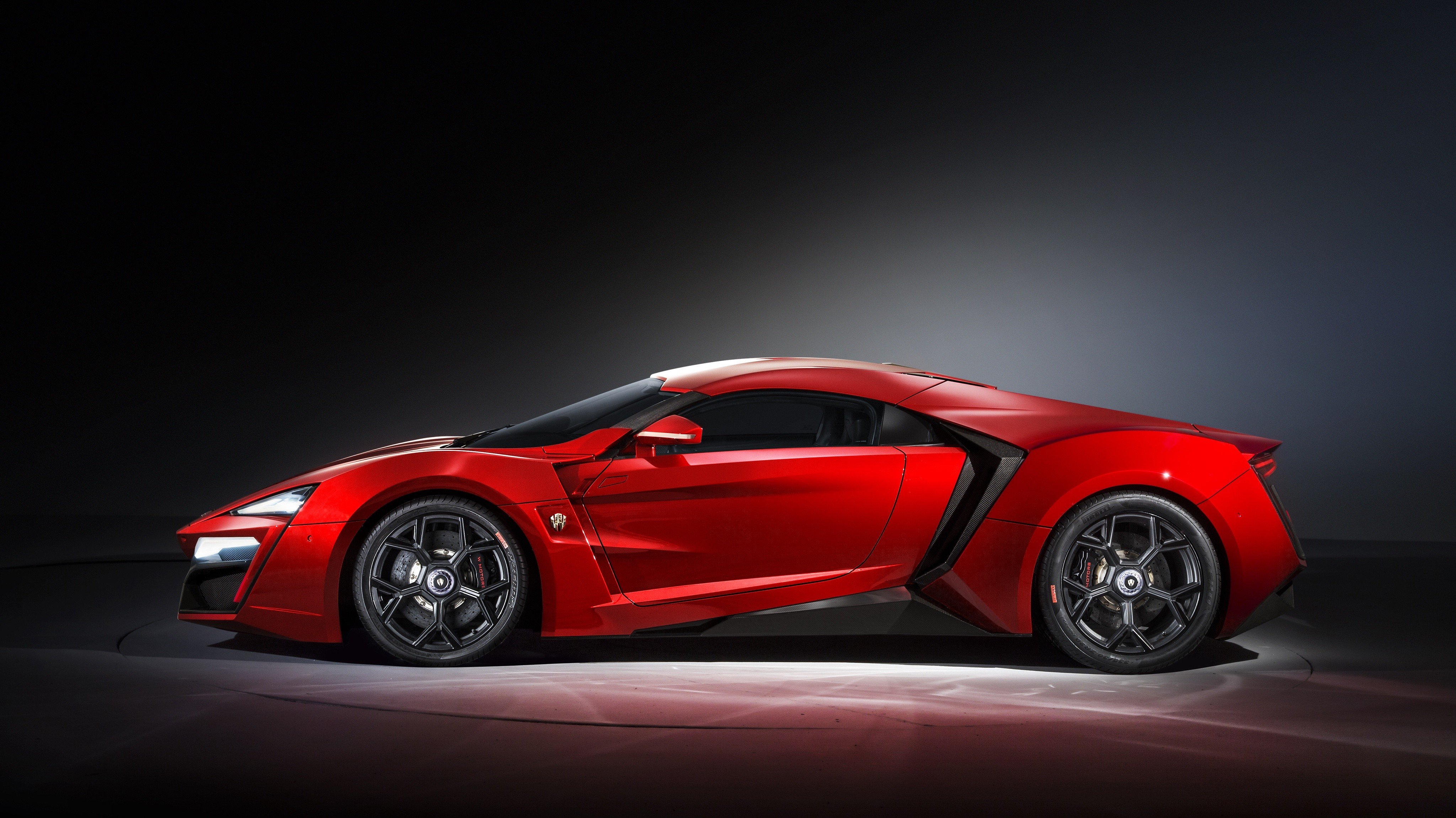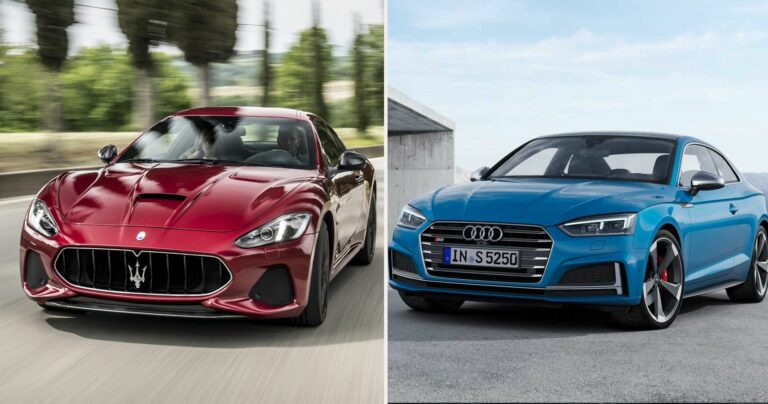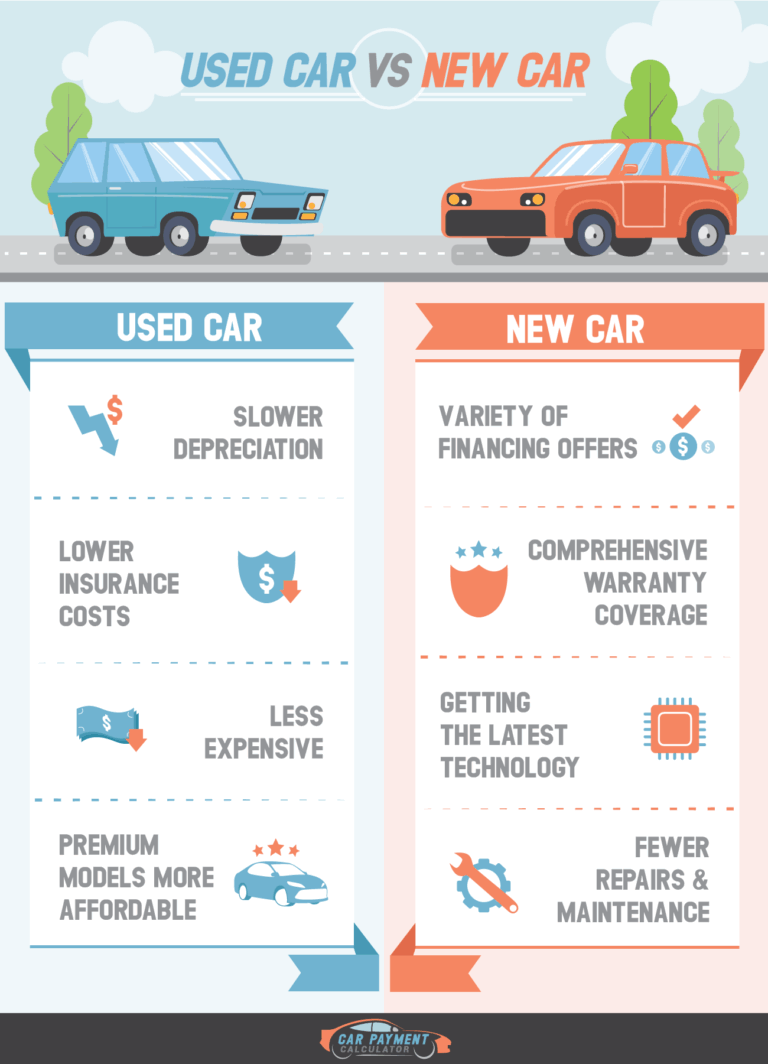Car Audio Products Brands: A Comprehensive Guide to Elevating Your In-Car Sound
Car Audio Products Brands: A Comprehensive Guide to Elevating Your In-Car Sound cars.truckstrend.com
In today’s automotive landscape, a car is more than just a means of transport; it’s an extension of our personal space, a mobile office, or a sanctuary on wheels. Central to enhancing this experience is the car’s audio system. For many, the factory-installed sound system simply doesn’t cut it, lacking the clarity, power, and depth needed to truly enjoy music, podcasts, or audiobooks on the road. This is where the world of car audio products brands comes into play.
Car audio product brands are the innovators and manufacturers behind the speakers, amplifiers, head units, subwoof and digital signal processors (DSPs) that transform a mundane factory sound into an immersive, high-fidelity listening experience. Choosing the right brand is crucial, as each brings its unique philosophy, sound signature, technological prowess, and price point to the table. This guide will delve deep into the diverse universe of car audio brands, helping you navigate the options and make informed decisions to build your dream in-car sound system.
Car Audio Products Brands: A Comprehensive Guide to Elevating Your In-Car Sound
The Evolving Landscape of Car Audio Brands: An Overview
The car audio industry has a rich history, evolving from simple AM/FM radios to sophisticated multi-channel, high-resolution audio systems. Throughout this evolution, various brands have emerged, each carving out a niche based on their specialization, target audience, and commitment to sound quality or features. Understanding this landscape is the first step in choosing your path to audio nirvana.
Broadly, car audio brands can be categorized based on their primary focus and market positioning:
- Premium/High-End Audiophile Brands: These brands prioritize absolute sound fidelity, using exotic materials, advanced engineering, and meticulous craftsmanship. They cater to discerning listeners who seek an uncompromised audio experience and are willing to invest significantly. Examples include Focal, Audison, Morel, Helix, Brax, and McIntosh.
- Performance/Mid-Range Brands: This segment offers an excellent balance of sound quality, features, durability, and price. They are popular among enthusiasts looking for a significant upgrade over factory systems without breaking the bank. Key players here include JL Audio, Alpine, Kenwood, Pioneer, Rockford Fosgate, and Hertz.
- Value/Enthusiast Brands: These brands focus on delivering impressive performance and features at more accessible price points. They often appeal to younger audiences or those seeking powerful bass and loud volumes on a budget. Kicker, Infinity, JBL, Sony, and JVC are prominent in this category.
- OEM Integration Specialists: As modern car systems become more complex, integrating aftermarket audio can be challenging. These brands specialize in products that seamlessly integrate with factory head units and vehicle electronics, allowing for upgrades while retaining original features. AudioControl, PAC, and Metra are well-known in this domain.

Dissecting Product Categories and Their Leading Brands
A complete car audio system comprises several interconnected components, and different brands often excel in specific areas. Understanding these components and the brands associated with them is vital.
1. Head Units (Receivers)
The head unit is the brain of your car audio system, controlling source selection, volume, and often basic sound processing. Modern head units offer features like touchscreen displays, Apple CarPlay, Android Auto, Bluetooth, USB connectivity, navigation, and even built-in DSPs.

- Leading Brands: Pioneer, Kenwood, Alpine, Sony, JVC. These brands consistently innovate, offering a wide range of head units from basic single-DIN models to advanced double-DIN multimedia receivers. Alpine and Pioneer are often lauded for their sound quality and user interfaces, while Kenwood provides a strong balance of features and performance.
2. Speakers (Component & Coaxial)
Speakers are where the electrical signal is converted into audible sound. They are perhaps the most impactful upgrade for improving sound clarity and detail.

- Coaxial Speakers: All speaker elements (woofer, tweeter, sometimes midrange) are combined in a single unit. Easier to install, good for basic upgrades.
- Leading Brands: JBL, Infinity, Kicker, Pioneer, Kenwood. Offer robust, clear sound at competitive prices.
- Component Speakers: Separate woofers, tweeters, and external crossovers. This allows for better sound staging and imaging, as tweeters can be mounted optimally (e.g., on the dashboard or A-pillars).
- Leading Brands: Focal, Morel, JL Audio, Hertz, Audison, Rockford Fosgate. These brands are renowned for their meticulous design, use of premium materials, and ability to reproduce intricate musical details with precision.
3. Amplifiers
An amplifier boosts the low-level audio signal from the head unit to a power level sufficient to drive speakers and subwoofers. A dedicated amplifier provides more power, better dynamics, and cleaner sound than a head unit’s built-in amplifier.
- Leading Brands: JL Audio, Rockford Fosgate, Alpine, Kicker, Audison, Hertz. JL Audio and Audison are highly regarded for their clean power delivery and advanced features (e.g., built-in DSPs). Rockford Fosgate and Kicker are popular for their robust, high-output amplifiers suitable for powering large systems and subwoofers.
4. Subwoofers
Subwoofers are dedicated speakers designed to reproduce low-frequency sounds (bass). They add depth, impact, and realism to your music that full-range speakers often cannot achieve.
- Leading Brands: JL Audio, Kicker, Rockford Fosgate, Sundown Audio, Digital Designs. JL Audio subwoofers are known for their musicality and precise bass reproduction. Kicker and Rockford Fosgate are popular for their powerful, hard-hitting bass. Sundown Audio and Digital Designs cater to enthusiasts seeking extreme bass output.
5. Digital Sound Processors (DSPs)
A DSP is a sophisticated electronic device that allows for precise manipulation and tuning of the audio signal. It can correct acoustic imperfections in the car’s interior, optimize speaker performance, and create a perfect sound stage.
- Leading Brands: Audison (Bit series), Helix, JL Audio (TwK, FiX), MiniDSP, AudioControl. These brands provide powerful tools for audiophiles and professional installers to fine-tune every aspect of the sound, making a significant difference in overall sound quality.
Key Factors to Consider When Choosing a Car Audio Brand
Selecting the right car audio brand isn’t just about picking the most expensive or popular name. It’s about aligning your preferences, budget, and vehicle with the brand’s offerings.
- Budget: This is often the primary constraint. Define a realistic budget for your entire system (components, wiring, installation) before looking at brands. High-end brands offer superior sound but come with a hefty price tag. Value brands provide excellent performance for their cost.
- Sound Quality Preference: Do you prefer a warm, natural sound, or something brighter and more analytical? Are you a bass-head, or do you prioritize vocal clarity and intricate details? Research brand "sound signatures" – Focal is often described as precise and detailed, Morel as warm and musical, Kicker as punchy and loud.
- Features and Technology: Consider what features are important to you. Do you need Apple CarPlay/Android Auto? High-resolution audio support? Advanced DSP capabilities for tuning? Some brands excel in technological integration, while others focus purely on acoustic performance.
- Durability and Reliability: Car audio components are subjected to vibration, temperature extremes, and dust. Look for brands with a reputation for robust build quality and good warranty support. Reading user reviews and professional tests can provide insight.
- System Integration: How well will the new components integrate with your existing vehicle’s electronics? Some cars have complex OEM systems that require specialized interfaces or DSPs to integrate aftermarket audio without losing factory features. Brands like AudioControl and PAC specialize in these solutions.
- Brand Ecosystem: Some brands offer a complete line of matching components (head units, amplifiers, speakers, subwoofers) designed to work together seamlessly. Sticking with one brand for your core components can simplify system design and ensure optimal compatibility.
Tips for Building Your Ideal Car Audio System
- Define Your Listening Goals: Before buying anything, ask yourself: What do I want to improve? Is it clarity, bass, overall volume, or a balanced, audiophile experience? This will guide your component choices and brand selection.
- Start with the Source (or Speakers): For many, upgrading the head unit (if it’s old or lacks features) or the front speakers is the most impactful initial step. A good head unit provides a clean signal, while quality speakers immediately improve clarity.
- Add an Amplifier for Power and Clarity: Once you have decent speakers, an external amplifier will unlock their full potential, providing cleaner, more dynamic sound at higher volumes without distortion.
- Integrate a Subwoofer for Depth: If you love bass, a subwoofer is essential. It takes the burden of low frequencies off your main speakers, allowing them to focus on mids and highs, resulting in a clearer overall sound.
- Consider a DSP for Perfection: For serious audiophiles or complex systems, a DSP is invaluable. It allows for precise tuning, time alignment, and equalization to optimize the sound for your specific car’s acoustics.
- Don’t Skimp on Accessories: Quality wiring, proper sound deadening, and professional installation accessories are just as important as the components themselves. They minimize noise, improve bass response, and ensure longevity.
- Professional Installation vs. DIY: While many components can be DIY installed, complex systems, especially those requiring OEM integration or precise tuning, benefit greatly from professional installation. Experienced installers understand vehicle acoustics and wiring intricacies.
- Audition Components: If possible, listen to different speakers and subwoofers in a controlled environment (like a demo room at a car audio shop) to understand their sound characteristics before committing.
Challenges and Solutions in Car Audio Upgrades
Upgrading car audio isn’t without its hurdles, but most have established solutions.
- Challenge: Complex OEM System Integration: Modern vehicles use intricate data networks (CAN bus) and highly integrated factory radios, making simple speaker swaps difficult without losing features.
- Solution: Utilize OEM integration specialists (e.g., AudioControl, PAC) that offer interfaces, line output converters, and DSPs designed to work seamlessly with factory systems. Some brands offer "plug-and-play" solutions for specific vehicle models.
- Challenge: Budget Constraints: High-quality car audio can be expensive.
- Solution: Plan phased upgrades. Start with the most impactful components (e.g., speakers and a 4-channel amplifier) and add a subwoofer or DSP later. Consider value-oriented brands that offer great bang-for-buck.
- Challenge: Installation Complexity: Running wires, mounting components, and integrating with vehicle electronics can be daunting for novices.
- Solution: Opt for professional installation. If DIY, thoroughly research wiring diagrams, safety precautions, and use proper tools. Many online forums and YouTube channels offer detailed guides.
- Challenge: Sound Tuning and Acoustics: Achieving optimal sound in a car’s confined and acoustically challenging environment is difficult.
- Solution: Invest in a DSP and learn how to use its features (or hire a professional tuner). Sound deadening material applied to doors, trunk, and floor can significantly improve acoustics by reducing road noise and vibrations.
Car Audio Product Brands: Typical Price Ranges
It’s challenging to provide exact prices as they vary significantly by specific model, features, retailer, and regional promotions. However, this table offers a general guide to typical price ranges for popular product categories across different brand tiers.
| Brand Tier/Category | Head Units (Receivers) | Component Speakers (Pair) | Amplifiers (4-Ch) | Subwoofers (Single) |
|---|---|---|---|---|
| Premium/High-End | $500 – $2,000+ | $400 – $2,000+ | $600 – $3,000+ | $400 – $1,500+ |
| (e.g., Focal, Audison, Morel, Helix) | (Advanced DSP, Hi-Res Audio, Premium Builds) | (Audiophile quality, exotic materials, precise sound) | (High power, extremely clean signal, advanced features) | (Precision, depth, musicality, high power handling) |
| Mid-Range/Performance | $200 – $700 | $150 – $500 | $250 – $800 | $150 – $600 |
| (e.g., JL Audio, Alpine, Kenwood, Pioneer, Rockford Fosgate, Hertz) | (Feature-rich, solid sound, reliable performance) | (Balanced performance, good clarity and detail) | (Reliable power, good efficiency, solid feature sets) | (Strong, impactful bass, good power handling) |
| Value/Enthusiast | $100 – $300 | $50 – $200 | $100 – $400 | $75 – $300 |
| (e.g., Kicker, Infinity, JBL, Sony, JVC) | (Basic features, good value, improved sound over OEM) | (Improved clarity and volume over OEM) | (Good power for the price, suitable for basic systems) | (Punchy bass, good for enhancing factory sound) |
Disclaimer: These are approximate retail price ranges in USD and can vary based on specific product model, features, sales, and retailer. Installation costs are not included in these estimates.
Frequently Asked Questions (FAQ) about Car Audio Products Brands
Q1: What’s the "best" car audio brand?
A1: There isn’t a single "best" brand, as "best" is subjective and depends on your specific needs, budget, and sound preferences. Focal might be best for pure audiophile quality, while Kicker might be best for powerful bass on a budget. The "best" brand for you is one that aligns with your goals and offers reliable products within your price range.
Q2: Should I replace my head unit first or my speakers?
A2: It depends on your current setup and goals. If your factory head unit lacks features (Bluetooth, CarPlay) or has a very weak amplifier, upgrading it can be a good first step. However, for a noticeable improvement in sound clarity and detail, upgrading your speakers usually yields more immediate and satisfying results. Often, a combination of both or adding an amplifier to better drive new speakers is ideal.
Q3: Is professional installation necessary for car audio upgrades?
A3: For simple speaker swaps or head unit replacements, many DIY enthusiasts can manage. However, for complex systems involving amplifiers, subwoofers, DSPs, and especially OEM integration, professional installation is highly recommended. Professionals ensure proper wiring, safety, optimal component placement, and often provide tuning services for the best sound.
Q4: What’s the difference between component and coaxial speakers?
A4: Coaxial speakers combine the woofer and tweeter (and sometimes midrange) into a single unit, making them easy to install. Component speakers separate the woofer, tweeter, and a passive crossover network. This separation allows for better sound staging and imaging because the tweeter can be mounted closer to ear level, directing high frequencies more accurately. Component sets generally offer superior sound quality.
Q5: Do I need a Digital Sound Processor (DSP)?
A5: A DSP is not strictly necessary for every system, but it’s highly recommended for anyone serious about achieving optimal sound quality. It allows for precise tuning, time alignment (making sounds from all speakers arrive at your ears simultaneously), equalization, and crossover adjustments, compensating for the challenging acoustics of a car interior. It’s especially useful when retaining a factory head unit.
Q6: How much should I expect to spend on a good car audio system?
A6: The cost can vary wildly. A basic upgrade (new speakers and a head unit) might range from $300-$800. A solid mid-range system with an amplifier and subwoofer could be $1,000-$3,000. High-end, audiophile-grade systems can easily exceed $5,000, $10,000, or even more, depending on the components and custom installation work. Set a realistic budget and prioritize the components that will give you the most significant improvement for your listening preferences.
Conclusion
The world of car audio products brands is vast and exciting, offering a pathway to transform your daily commute into a rich, immersive auditory experience. From the precision engineering of high-end audiophile brands like Focal and Audison to the powerful performance of enthusiast favorites like JL Audio and Kicker, there’s a brand and a product for every preference and budget.
By understanding the different product categories, considering key factors like sound preference and system integration, and leveraging practical tips, you can confidently navigate this landscape. Remember that building a great car audio system is a journey, not a destination. It’s about finding the right balance of components that resonate with your ears and elevate your driving pleasure. Choose wisely, listen intently, and enjoy the symphony on the open road.




